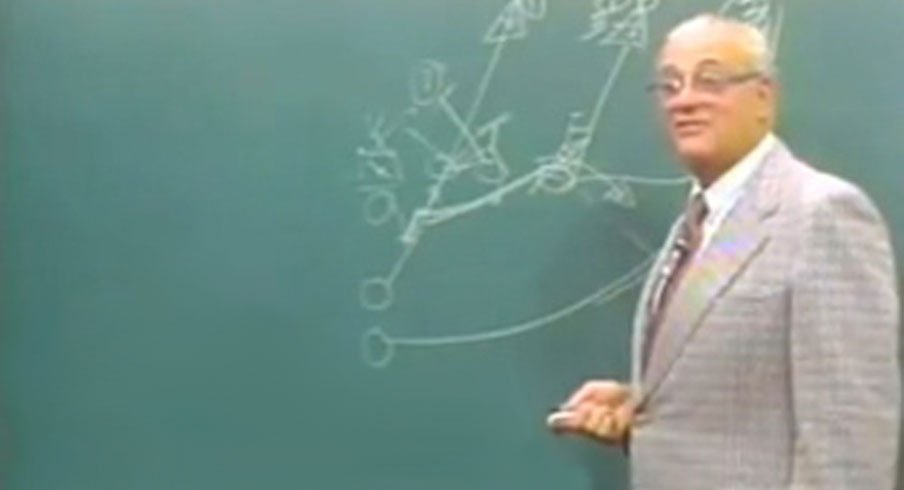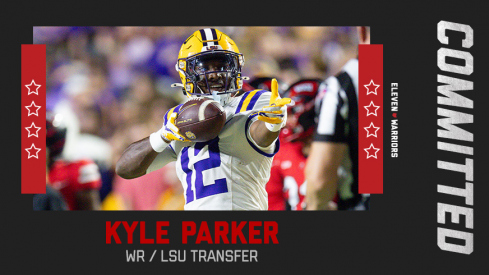Urban Meyer announced this winter that he was studying NFL teams utilizing spread read principles, such as the San Francisco 49ers and Washington Redskins. Meyer apparently liked what he saw, and wanted to implement certain wrinkles with the 2013 Ohio State Buckeyes.
At the time, I discussed a key innovation the 49ers had utilized with the zone read play and surmised that perhaps that was what Meyer was referencing.
Meyer is putting his money where his mouth is. Spring practice has demonstrated that OSU is not just utilizing a wrinkle. They have installed the Diamond formation and associated concepts that the 49ers and Redskins so successfully employed.
It is therefore an opportune time to examine the formation that has become popular both in the NFL and amongst Air Raid teams.
Not Your Daddy's 'Bone
The Diamond formation refers to a shotgun, full house, pistol backfield, which in some ways is a mirror image of the wishbone.
The quarterback and tailback are in a pistol shotgun formation, with the QB four yards deep and the tailback seven yards in the backfield.
The QB is then flanked by two running backs and/or H-backs, placing all four backs in the backfield. Coaches then generally split their two ends wide.

[Graphic via Offensive Breakdown]
Mixing your Pitches
The first benefit that no-huddle, up-tempo teams have found with utilizing the Diamond is quickly presenting a change of pace to the defense with little additional learning for the offense.
Defenses often play spread offenses based out of 11 personnel (3 WR, 1 TE, 1 RB) with a nickel defense. A no-huddle team can quickly substitute to the full house Diamond and provide defenses a drastically different look than what they had heretofore faced.
The defense lacks the time to adjust, both in terms of personnel and mindset. As Brophy states in reference to Louisiana Tech's use of this package:
After pacing through a series with receivers spread the width of the field, Tech will race through substitutions and be set within 10 seconds with 3 backs in the backfield. The defense, in the given personnel grouping they had from the last play, have to determine how this formation will be played. Typically, the nickel will join the box, but this only provides 7 defenders to 8 offensive players (excluding the quarterback).
With the Buckeyes' employment of the QB as a run threat, the Diamond presents the defense with 9 in-box offenders. A defense cannot adequately prepare for spread looks and then quickly adjust to facing such a tightly packed formation.
The Diamond also presents the defense a symmetrical front, forcing the defense to even up their numbers and defend equally across the formation.
Conversely a team like Ohio State can run much of its base offense from the look. Adding the Diamond formation thus requires little additional practice time beyond teaching the running backs where to align. But it places an additional stressor that a defense must prepare for.
I Be Zonin'
One reason the formation is so popular at the NFL level is the blocking options the Diamond brings to the inside zone read play.
The first feature is the downhill element added by the pistol. The offensive line employs an aggressive, inside zone blocking scheme. The QB opens away from the play and the tailback aims to the backside A-gap, bending back towards the zone blocking. The QB reads the backside defensive end.
As I've noted, inside zone read from the pistol (the pistol's founder, Nevada's Chris Ault, refers to the play as "Bluff") shares many characteristics with Urban Meyer's base tight zone play.
Both are looking to overcome the lateral aspect of having a halfback next to a shotgun quarterback by instead getting the tailback quickly going north and south. With Meyer's inside zone, the running back's aiming point is the backside 'a' gap bubble where cutback lanes naturally develop with inside zone. From the pistol, the tailback has the same aiming point, attacking the backside A gap and then 'bending' back to the frontside zone blocking.
Compare this diagram from Chris Brown:
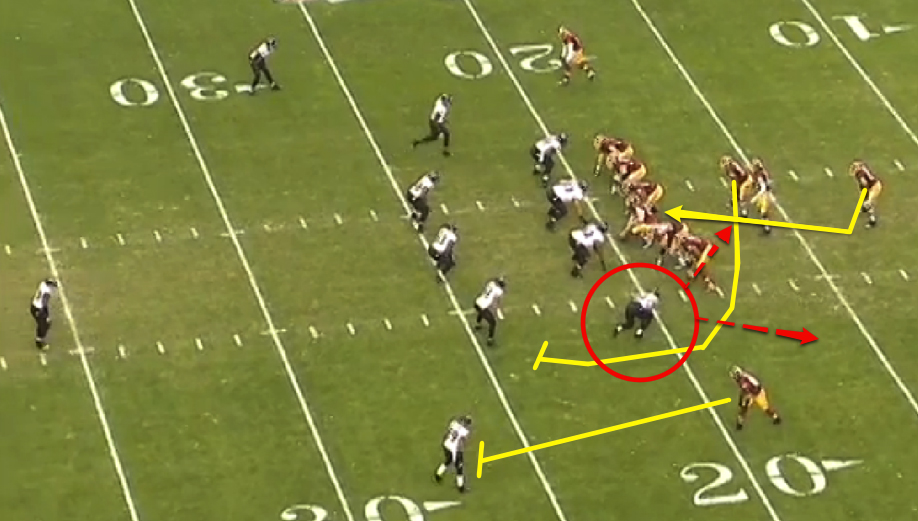
With Meyer's inside zone read play:
It is therefore not surprising that Meyer would find the play appealing.
But the Diamond's real value added comes with applying the other two backs as blockers away from the zone blocking. Both backs arc block. The first back blocks the first alley player that shows, effectively acting as a lead blocker for the QB should he keep.
The second back has a more interesting assignment. This is the wrinkle added by the 49ers and other NFL teams. Like the QB, this back also reads the backside defensive end. If the backside end stays to contain the QB, the back will seal the end. This create a cut-back lane for the tailback behind the zone blocks and functions like a typical 1-back inside zone play.
If the end crashes, however, the back will assume the QB is going to keep. He will leave the end unblocked, allowing the defensive lineman to remove himself from the play. He too will lead the QB through the alley and block the first opposite jersey he sees.
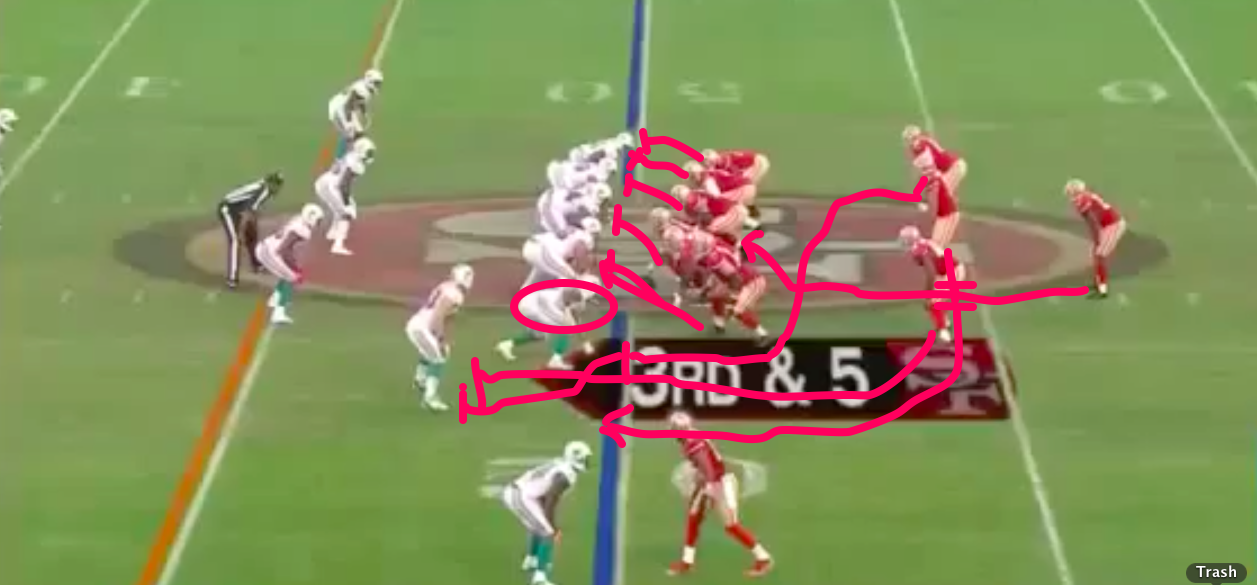
If the read is for the QB to keep, he should have two lead blockers. Consider Braxton Miller on the defense's edge with two lead blockers and it is not difficult to see the play's appeal to Meyer and his coaching staff.
But Ohio State can also run many of its other standard run plays from the Diamond. For instance, the 49ers and others run the traditional power play from the Diamond. The Diamond allows an offense to use two lead blockers in addition to the pulling guard to amass at the point of attack.
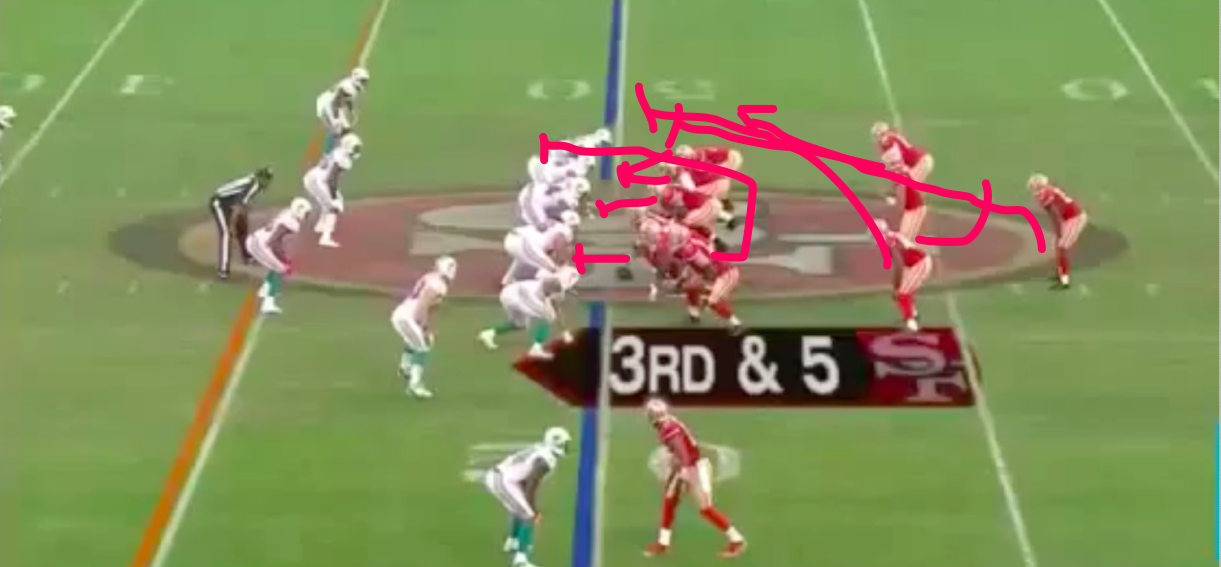
OSU can also run other read plays from the formation, such as inverted veer/power read. In that case it is one of the halfbacks that runs the jet sweep action with the quarterback's front side read, with the tailback serving as a decoy.
Again, this play can be run in either direction. OSU can also utilize option plays. For instance, the Buckeyes can fake to the up-backs one way and then run counter-option with the tailback away. The formation also is well set for Meyer's shovel option.
The upshot again is that OSU can execute much of its base run game from the formation with little additional necessary practice time.
Takin' A Shot
The defense is forced to make a choice because it must still cover the split wide receivers. The defense can either leave their corners isolated and devote its safeties to the box, or help its corners and be outnumbered at the point of attack.
The result is often the oft-cited one-on-one matchups to the outside of the field. Teams can thus utilize the Diamond to dictate what coverage the defense must utilize. NFL offenses have embraced the Diamond as much for its ability to open chunk yards in the passing game through play action as through the additional run game blockers.
The real benefit to these matchups is that wide receivers have a 2-way go against cornerbacks who lack safety help. This especially opens the middle of the field. Linebackers and safeties are sucked in to the play fake, allowing receivers to come free behind. This is accentuated by the QB's fake being made more effective through looking like he is reading the end.
A favorite play from the Diamond is thus a simple 2-man post-dig route off play action. This attacks the middle of the field behind vacating safeties and creates a vertical stretch. It unfolds immediately within the QB's vision and is thus a straightforward read for a young QB to execute. But it is one that can lead to a big play.
OSU can also implement its full complement of bootleg movement plays from the Diamond.
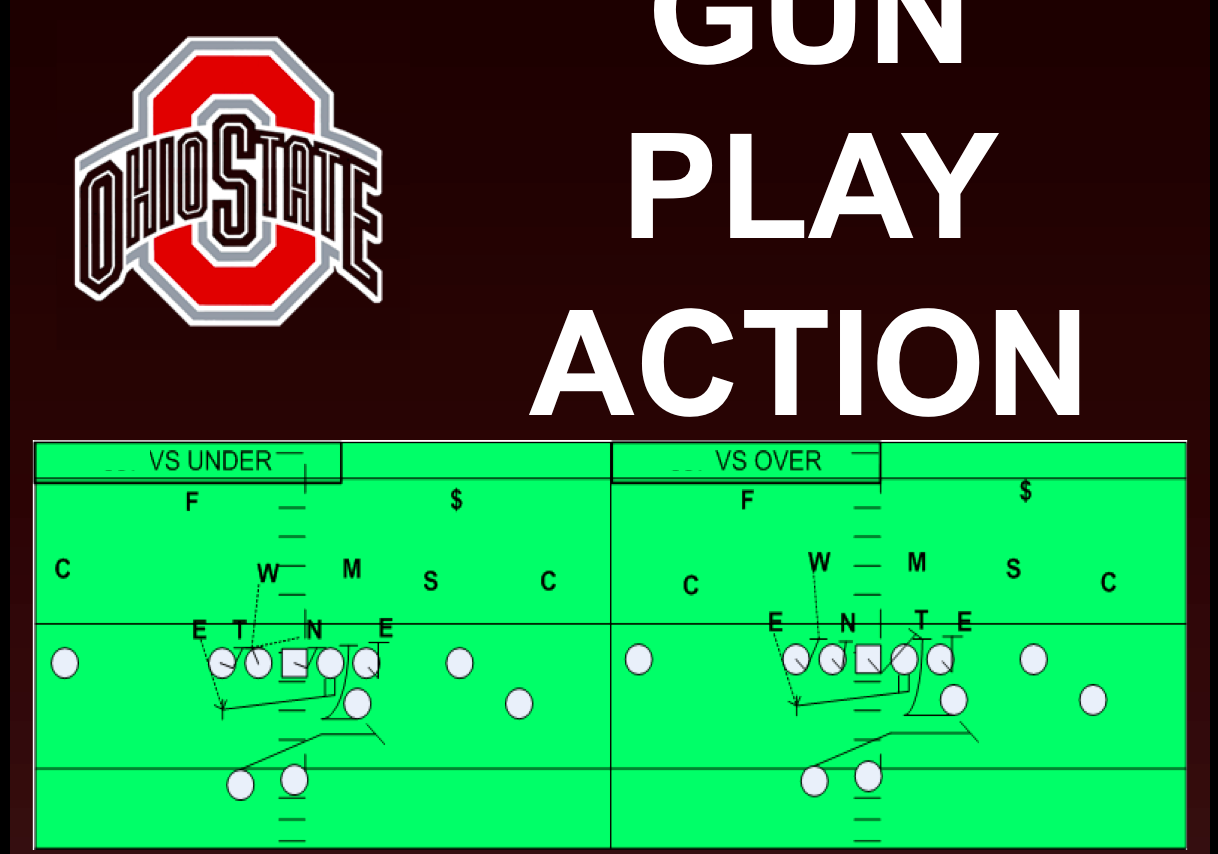
The simplest look is to fake inside zone and then slip the backside back into the opposite flat. The back is taking the same path he would as if he was blocking, having the advantage of making the play look alike.
[Graphic via Offensive Breakdown]
When the defense begins to bite, the Buckeyes can then send that back on a wheel route away from the play fake for a big play. The Buckeye tailbacks have demonstrated they are talented enough to do so.
The Diamond formation underscores a maxim from Homer Smith. Effective faking — not necessarily spreading the field — constitutes the equalizer for offenses and creates big plays. For OSU there is also a practical advantage. The Buckeyes have a plethora of big, versatile running backs. It makes sense to utilize those tailbacks where they are a threat to run or block. It also provides an avenue to play several tailbacks at once.
In all likelihood, the Diamond is not an every down package or even a staple of the OSU offense. But used in spurts with their no-huddle tempo, the Diamond could present conflict problems for a defense, allow the Buckeyes to play their running backs together, and create the opportunity for explosive plays.
